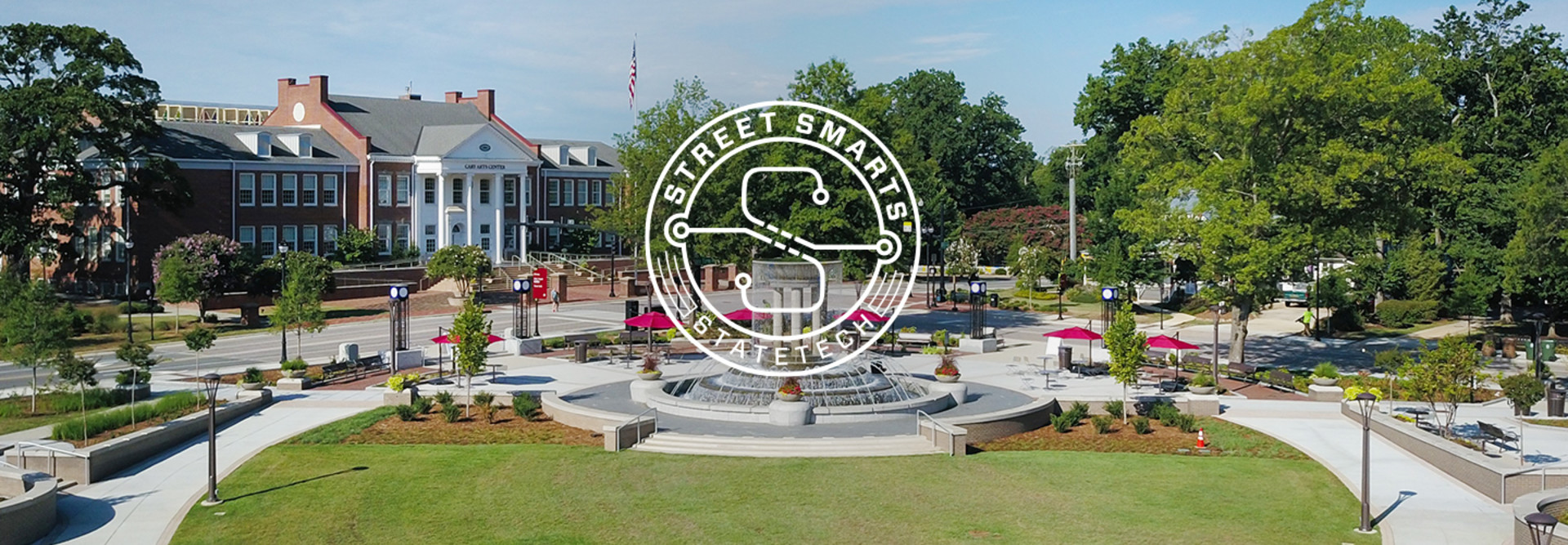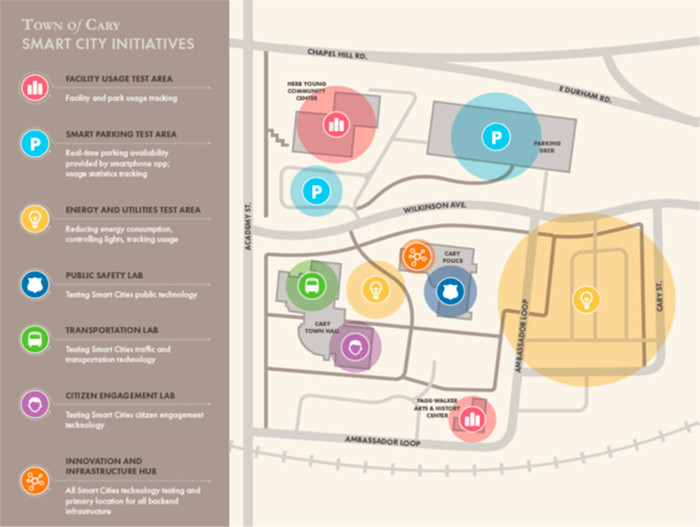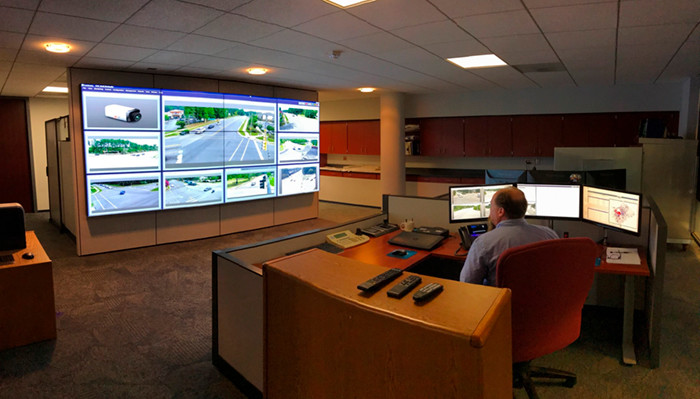A Designated Area Allows Officials to Sample Smart Tech
Cary’s downtown was undergoing streetscape renovation work in 2016, and that work initially helped kickstart the town’s smart technology testing and implementation efforts, says Smart Cities Program Manager Terry Yates.
“It really gave us the idea: Hey, let’s use our campus, which represents a mini city and lab, to deploy smart city technology,” Yates says. “Let’s learn about it so we can understand how we can deploy it from an enterprise level.”
Cary has implemented technology from a wide range of partners in the space, according to Susan Sanford, executive director of the Research Triangle Cleantech Cluster, an initiative of business, government, academic and nonprofit leaders that work to accelerate innovation in the region.
“They have this wonderful smart campus in the town hall area,” Sanford says. “Their whole worldview is to have a 360-degree view, so every time the city touches a resident, it understands who that person is and what services are available to them.”














